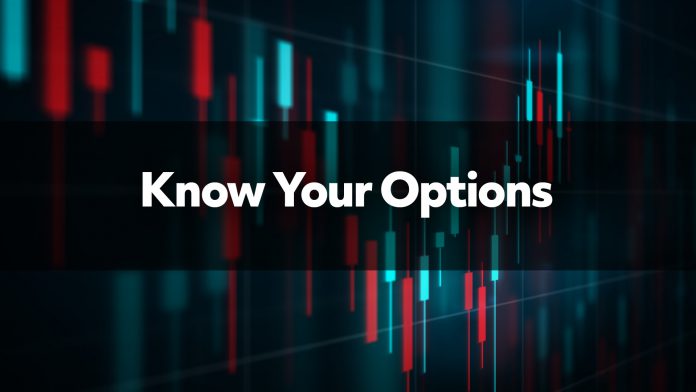Traders often expect a stock will move higher or lower. But they might not be sure which strategy to use. Should they buy calls looking for a rally, or puts looking for a drop? Should they buy single options, or spread one contract against another? This post will explore some of those possibilities.
What a Spread Is
As covered previously, a vertical spread uses two options of the same type (call or put) in the same underlying stock. They must have the same expiration and equal numbers of contracts at each strike.
The options closer to the money, which cost more, are bought. The contracts further from the money, which cost less, are sold. This lowers the net cost.
For example, say stock XYZ is at $100 and you think it’s going to $110. Using imaginary values, you could do something like:
- Buy the 105 calls for $2.
- Sell the 110 calls for $1.
In this case, the spread would cost just $1 — half the price of buying the calls outright. The position will be worth $5 if stock XYZ closes at or above $110 on expiration.
That would be a potential 400 percent return from the shares moving just 10 percent.
Leverage for Options Traders
This is a prime example of generating leverage with options. On one hand, you have the basic leverage built into calls and puts because they’re derivatives.
But spreads do even more because they reduce the upfront expense. That lower cost basis can give spreads even bigger gains on a percentage basis from a similar move in the underlying stock. That’s another source of leverage.
You Can Target Levels With Spreads
Options spreads can be especially effective when you expect a move of a limited size. For example, a stock might be in a range or have a clear resistance level. Your technical analysis might suggest it will go to that certain level and then stop.
Or you might have successfully played a breakout and now are worried the stock will pullback to its old highs.
Spreads can be useful in cases like this. If you have a sense where a move might stop, that can help you select which contracts to sell. Chart levels help you pick strike prices.
Limits of Trading Spreads
This brings us to a limitation of vertical spreads: Their potential profits are limited.
Take the case of stock XYZ above. The imaginary vertical spread could make 400 percent from the shares rallying to $110. But what if they keep going all the way to $120 or $130? Unfortunately the spread still only makes a maximum of 400 percent.
This shouldn’t be a surprise when you think about it. After all, spreads have less risk because they have less cost. And, as everyone should know when it comes to money, less risk often means less reward.
This shouldn’t keep you from using spreads for directional plays. Your trading system might prefer them based on expectancy, and be willing to give up a few huge gains in return for less risk overall. You just need to know the pluses and minuses and select the right strategy for you.
A Hidden Cost of Spreads
There are two other things to know. First, all options have bid/ask spreads included in their their transaction cost. Trading a second leg (selling contracts further from the money) can result in a higher cost.
One way traders can overcome this is to focus on highly liquid underliers with narrower bid/ask spreads.
Second, spreads usually don’t realize their full returns until expiration. Consider the imaginary example of stock XYZ above.
If the stock rallies to $110 and there’s still one month before expiration, the spread won’t have reached its $4 maximum profit. Why? Because the 110 calls you’re short will still have time value. This prevents the spread from reaching its full value right away.
Option spreads consist of long and short option positions. Considering exercise and assignment risk is an important part of any option strategy.
Spreads and ‘Binary Events’
Given these benefits and limitations, traders often use vertical spreads for “binary events.” These are “all or nothing” occurrences like earnings reports or drug trials.
Say, for example, you think stock XYZ is going to have a bad quarterly report. If it’s at $100 you might buy the put spread between $95 and $90. This might cost about $1, creating the potential for a 400 percent profit. And if you’re wrong, $1 is all you lose.
There’s another reason why traders often use spreads around big events. Implied volatility will be inflated in both the contracts you buy and the contracts you sell. That spares you from overpaying for implied volatility being high ahead of the event, increasing the odds of earning some degree of profit.
Options trading is not suitable for all investors. Your TradeStation Securities’ account application to trade options will be considered and approved or disapproved based on all relevant factors, including your trading experience. See Characteristics and Risks of Standardized Options. Visit www.TradeStation.com/Pricing for full details on the costs and fees associated with options.
TN2477109D1022























